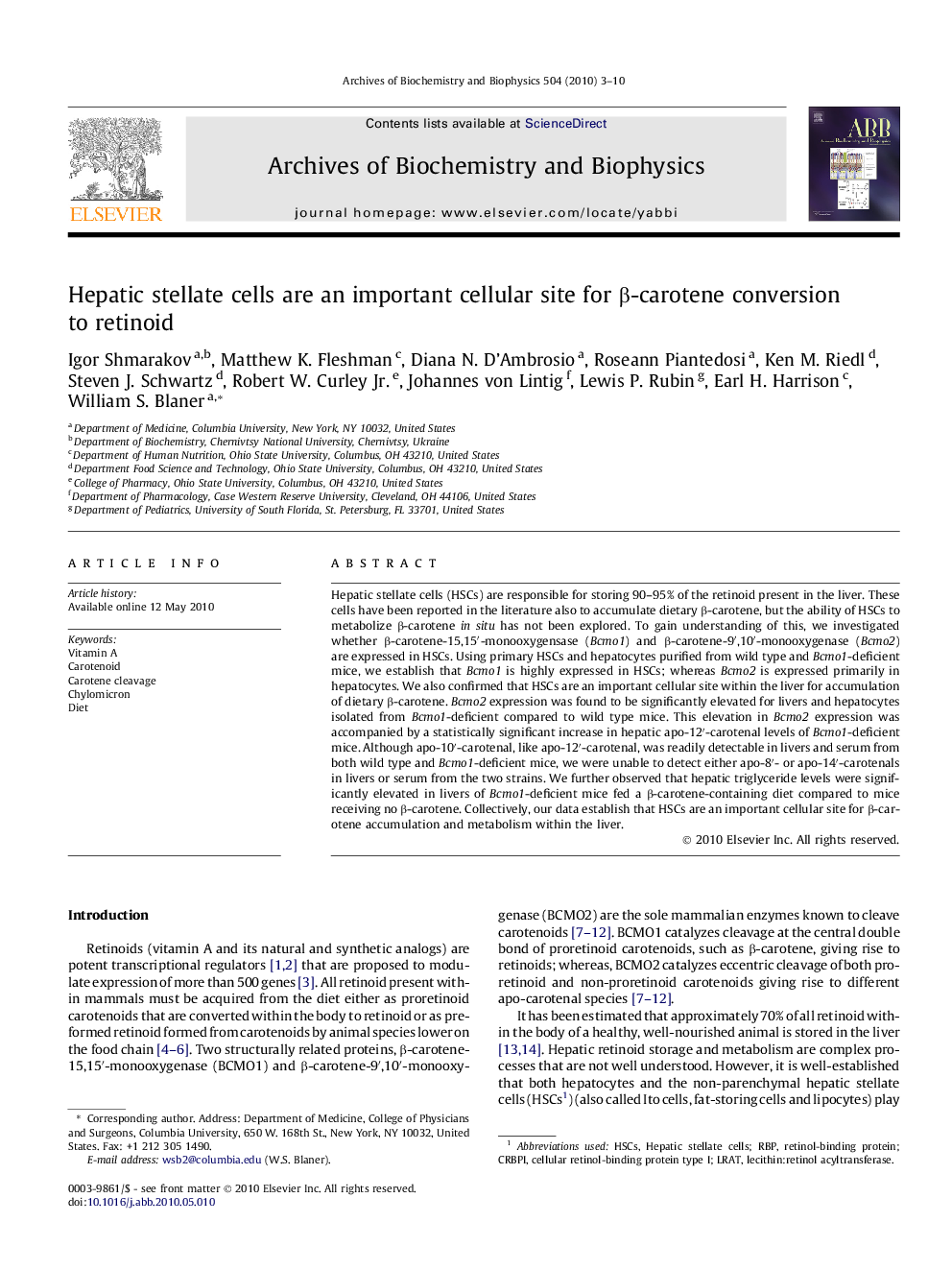| Article ID | Journal | Published Year | Pages | File Type |
|---|---|---|---|---|
| 1925865 | Archives of Biochemistry and Biophysics | 2010 | 8 Pages |
Hepatic stellate cells (HSCs) are responsible for storing 90–95% of the retinoid present in the liver. These cells have been reported in the literature also to accumulate dietary β-carotene, but the ability of HSCs to metabolize β-carotene in situ has not been explored. To gain understanding of this, we investigated whether β-carotene-15,15′-monooxygensase (Bcmo1) and β-carotene-9′,10′-monooxygenase (Bcmo2) are expressed in HSCs. Using primary HSCs and hepatocytes purified from wild type and Bcmo1-deficient mice, we establish that Bcmo1 is highly expressed in HSCs; whereas Bcmo2 is expressed primarily in hepatocytes. We also confirmed that HSCs are an important cellular site within the liver for accumulation of dietary β-carotene. Bcmo2 expression was found to be significantly elevated for livers and hepatocytes isolated from Bcmo1-deficient compared to wild type mice. This elevation in Bcmo2 expression was accompanied by a statistically significant increase in hepatic apo-12′-carotenal levels of Bcmo1-deficient mice. Although apo-10′-carotenal, like apo-12′-carotenal, was readily detectable in livers and serum from both wild type and Bcmo1-deficient mice, we were unable to detect either apo-8′- or apo-14′-carotenals in livers or serum from the two strains. We further observed that hepatic triglyceride levels were significantly elevated in livers of Bcmo1-deficient mice fed a β-carotene-containing diet compared to mice receiving no β-carotene. Collectively, our data establish that HSCs are an important cellular site for β-carotene accumulation and metabolism within the liver.
